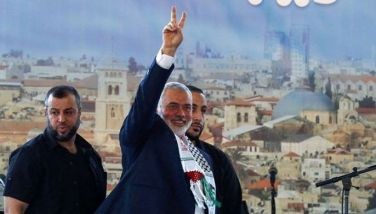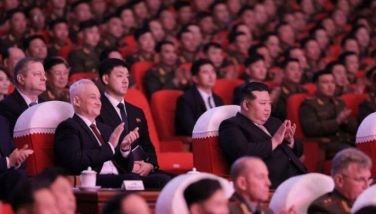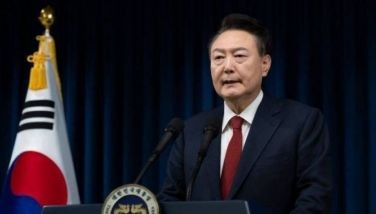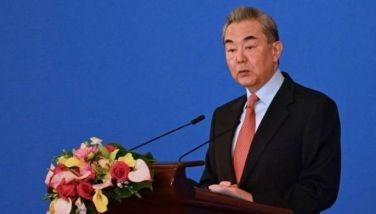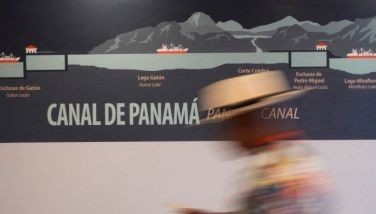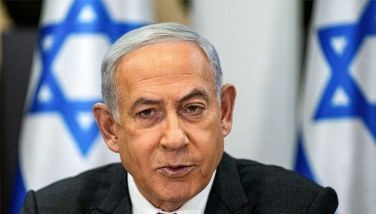US nuke commander 'assumes' North Koreans tested H-bomb
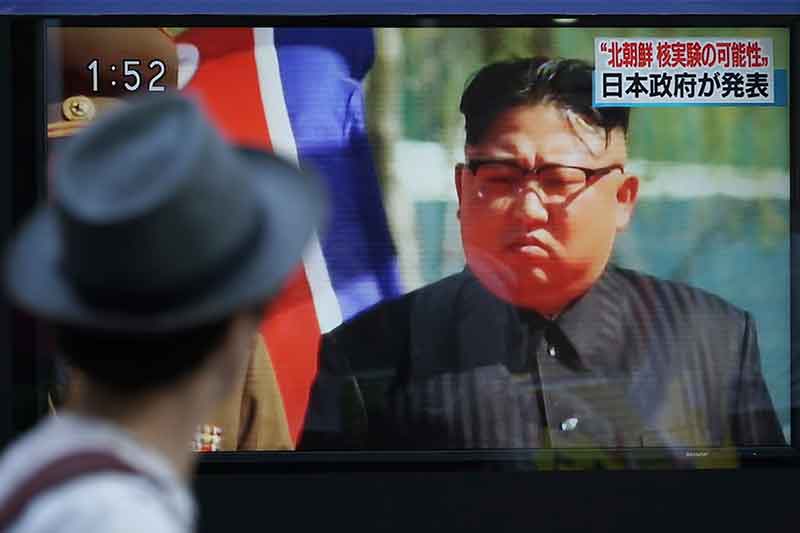
FILE - In this Sept. 3, 2017, file photo, a man watches a TV news program on a public screen showing an image of North Korean leader Kim Jong Un while reporting North Korea's possible nuclear test in Tokyo. The top commander of U.S. nuclear forces says he assumes the Sept. 3 nuclear test by North Korea was a hydrogen bomb. Air Force Gen. John E. Hyton, commander of Strategic Command, told reporters that while he was not in position to confirm it, he assumes from the size of the underground explosion and other factors that it was a hydrogen bomb, which is a leap beyond the fission, or atomic, bombs North Korea has previously tested. AP/Eugene Hoshiko
OFFUTT AIR FORCE BASE, Neb. — The top commander of U.S. nuclear forces said Thursday he assumes the Sept. 3 nuclear test by North Korea was a hydrogen bomb, suggesting a heightened U.S. concern that the North has advanced to a new level of nuclear firepower, even as it launched yet another ballistic missile over Japan into the Pacific Ocean.
Air Force Gen. John E. Hyten, commander of Strategic Command, told reporters that while he was not in a position to confirm it, he assumes from the size of the underground explosion and other factors that it was a hydrogen bomb — which is a leap beyond the fission, or atomic, bombs North Korea has previously tested.
Just moments after Hyten spoke at his headquarters near Omaha, word spread that North Korea had launched a mid-range ballistic missile over Japan. Defense Secretary Jim Mattis, who was with Hyten at Strategic Command headquarters at the time of the launch, said afterward that it was a reckless act.
"It was fired over Japan and put millions of Japanese in the duck-and-cover," he told a small group of reporters. "Landed out in the Pacific."
Asked about a possible American military response, Mattis said, "I don't want to talk on that yet."
Shortly after the Sept. 3 test, North Korea claimed they exploded a hydrogen bomb, and while U.S. officials have not contradicted them, they have not confirmed it, either. Administration officials had indicated they saw nothing to contradict the North's claim. Hyten went further, saying the characteristics of the test made him think it was an H-bomb.
Hyten would not discuss the exact size of the explosion from the Sept. 3 test, but Mattis had said on Wednesday that it was in excess of 100 kilotons — far larger than any of the North's five previous nuclear tests.
"When I look at a thing that size, I as a military officer assume that it's a hydrogen bomb," Hyten said. As head of Strategic Command, he would be in charge of all elements of the U.S. nuclear force in the event of nuclear war.
"I have to (assume this)," he added, "I have to make that assumption. What I saw equates to a hydrogen bomb. I saw the event. I saw the indications that came from that event. I saw the size, I saw the reports, and therefore to me I'm assuming it was a hydrogen bomb."
Asked whether it matters that the North Koreans had advanced to testing a hydrogen bomb, Hyten said, "Yes. The change from the original atomic bomb to the hydrogen bomb for the United States" in the 1940s changed America's strategic relationship with the Soviet Union because of "the sheer destruction and damage you can create with a weapon that size." The Soviets quickly matched the U.S. by exploding their own hydrogen bomb well before U.S. officials believed possible.
Pressed further, Hyten said he was not confirming that it was a hydrogen bomb.
"I'm just saying the size of the weapon shows that there was clearly a secondary explosion," he said.
Until a fission, or atomic, bomb, a hydrogen bomb is built with two "stages," or explosive devices that work in tandem to create fusion.
Hyten would not say how large the explosion was, but Mattis said Wednesday that it was more than 100 kilotons, which could put it in the category of an H-bomb.
Hyten said that while he believes it is only a matter of time before the North Koreans have a reliable nuclear-armed missile capable of hitting the United States, they probably still have more test work to do.
"They haven't put everything together yet," he said, referring to the ability to build a long-range missile with a nuclear warhead that can survive the extreme heat generated by re-entering the Earth's atmosphere on its way to a U.S. target. He said it would not be a surprise if the North Koreans were able to do that in fairly short order; he said it took the U.S. "less than a couple of years."
- Latest
- Trending














